Final Fantasy VI: How To Keep Going
When facing the end of everything, what is the point?
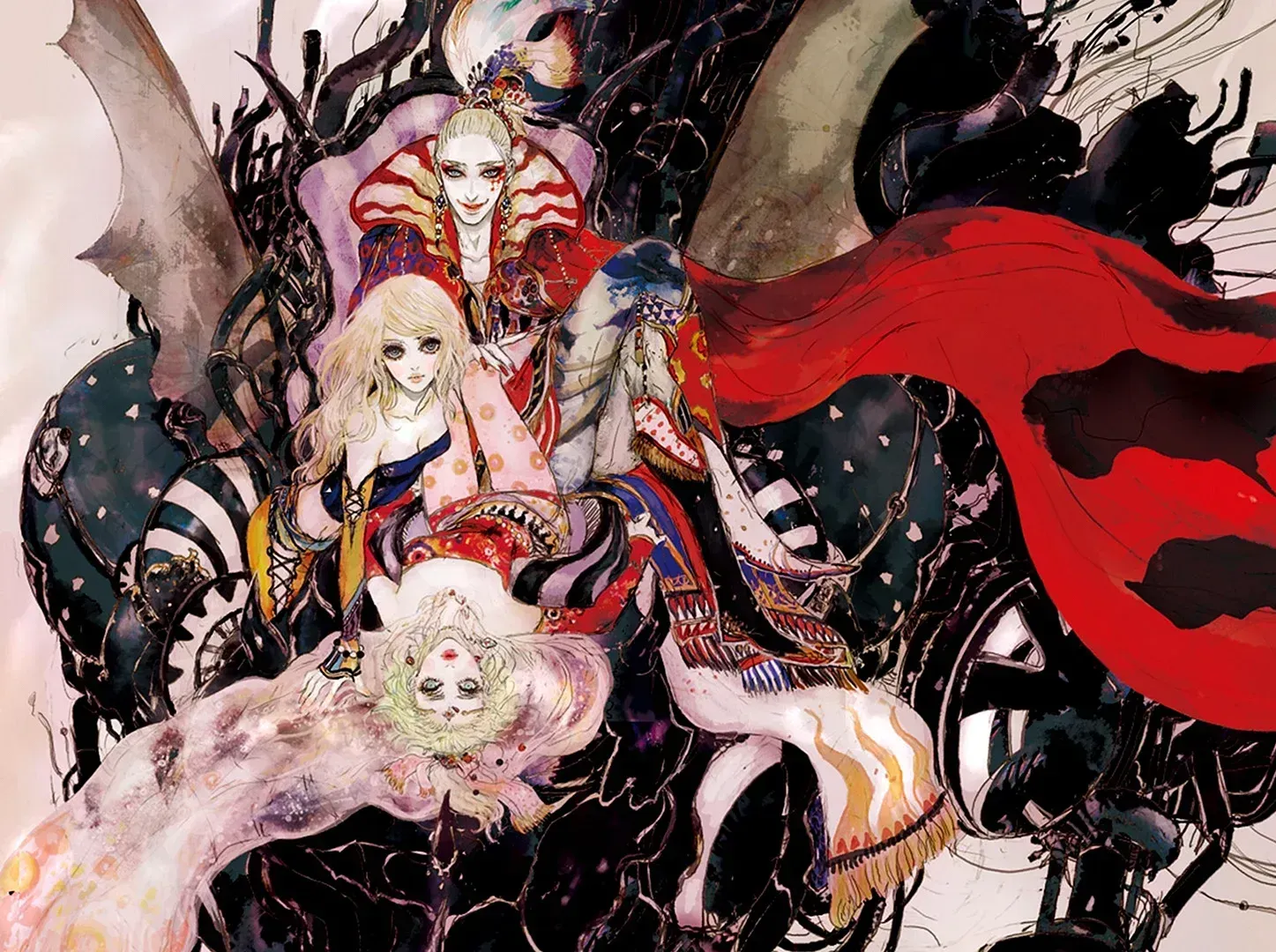
"If you just do stuff and nothing happens...what's it all mean?"
Jesse Pinkman, Breaking Bad
It's over.
The party has failed. Chances are lost, hope is extinguished, and all resources are expended. A once beautiful landscape falls into nothing, shrouded in darkness, the world into ruin. The seas boil over. Society collapses. Cities become shells of what they were, and tiny villages deteriorate into single homes shared by destitute families. Resources deteriorate until even the last vestiges of social hierarchy are no longer remembered. Humankind is alone, doomed to despair.
The heroes could not stop the end of the world. Evil has won.
Of meaning and meaninglessness
Final Fantasy VI presents itself as a stark deviation from other entries in the series, up to and including the titles published today. While Final Fantasy XV attempted to match the ruined state of the world in a tepid final act, its world of ruin is a stark emulation of the tragedy that Final Fantasy VI presents. Final Fantasy VII Rebirth paints a picture of a world on the brink of collapse. At the same time, Final Fantasy XVI's autocratic empires play politics over the bodies of the enslaved and the beleaguered. None of them have captured Final Fantasy VI's unique and cloying melancholy.
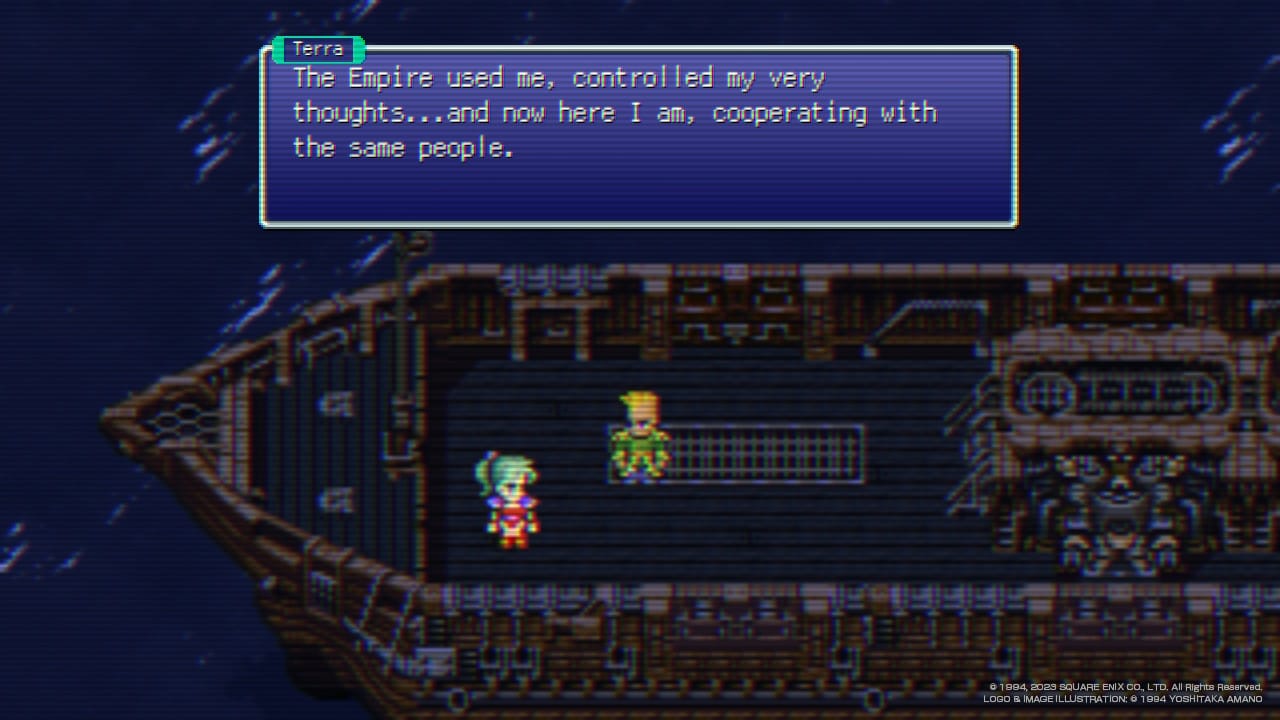
From its beginning, the world in Final Fantasy VI is falling apart. The corrupt Gestahlian Empire spreads its global presence with unstoppable technologies, utilizing its resources to spread fear through a crippled and desolate society. The corrupt Gestahlian Empire fragments the world of Final Fantasy VI into villages and city-states, imposing its fascistic rule on them. The presence of soldiers and mercenaries burdens the everyday lives of the average smallfolk, who constantly fear losing another piece of farmland and constantly look over their shoulders. When the local municipalities refuse to cooperate by sharing their resources with Gestahl, the Empire strikes out with material might, invading against armed resistance.
Final Fantasy VI opens with a cold show of strength, the frigid march of Magitek machines as they invade the northern coal-powered city of Narshe. The player watches as the terrifying Magitek armor tears through Narshe’s soldiers like tissue paper, decimating the town with powerful weapons as the frightened populace escapes into their homes. When the resistance is put to the test, everyday people must take up arms against a gruesome military might, witnessing the razing of their homes and the slaughter of their people. When the Empire recedes, they can only pick up the pieces and attempt to rebuild again, their meager towns a fragile palimpsest of rapidly decaying resources.
It's fiction, and still, it remains eerily poetic and strikingly familiar.
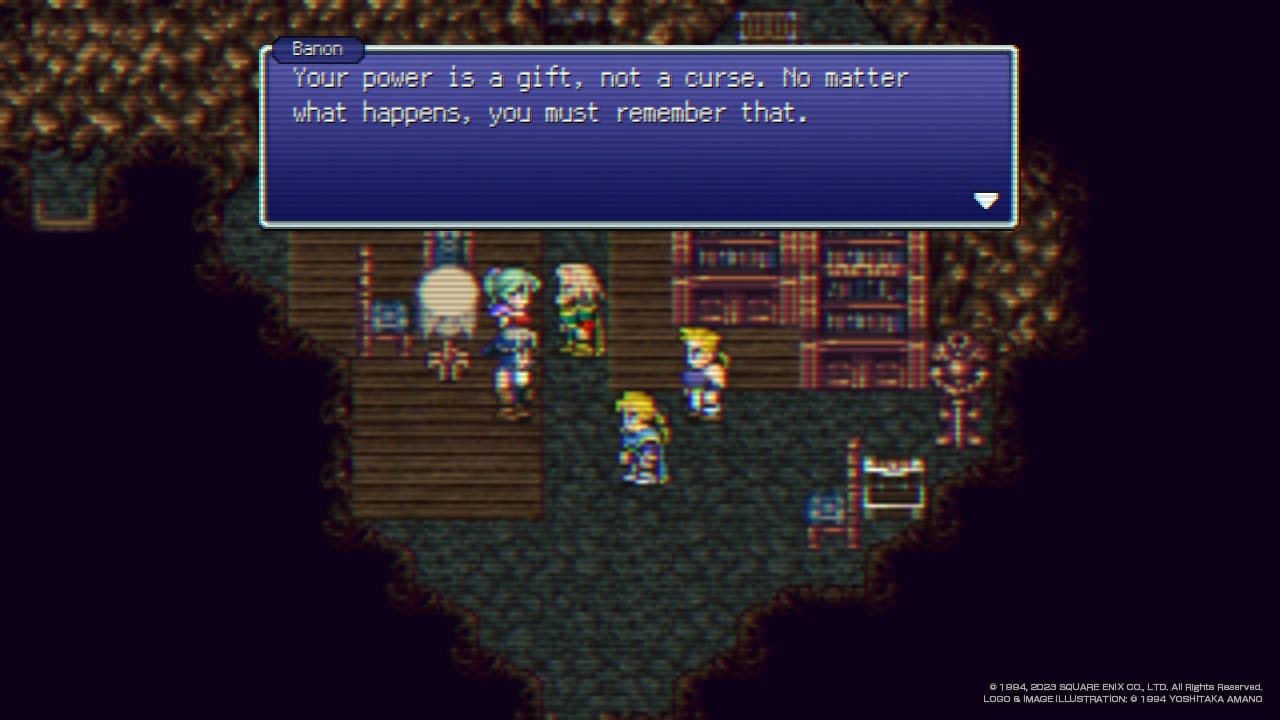
Final Fantasy VI presents itself as a stark deviation from other entries in the series, up to and including the titles published today.
The high cost of living
Final Fantasy titles are no strangers to this combative, socio-political narrative. The entire history of Final Fantasy can be distilled down to this basic concept: the meager resisting the powerful. While these games evolve from this early concept and approach the task of defeating some ancient god, they never lose the heart and soul of the narrative as friends and comrades strive for a better future.
We live in a world of tyrannical egos and bloodthirsty empires whose cogs of exploitation are oiled with the gore of the downtrodden. The most powerful empires in the world are the ones that don’t care about their populace, the ones that bleed resources and wage endless wars. While the average citizen toils in an underpaid position, their government sews schemes of malice, bloodshed, and control.
Final Fantasy has long offered us a fantasy wherein a small group of dedicated friends and comrades can eventually gather the strength to bring corrupt governments to their knees. While this methodology is easily represented in level-ups and summon magic, these are only representative of the core work, the struggles of the beleaguered to overcome the pain and chaos orchestrated by powerful supremacist groups, secretive regimes, and organized religions.
This is a fantasy I return to often, in a world where warfare is waged unjustly and beautiful, noble societies are crushed to ash and powder.
The power of comradeship
Through the course of the game, your party is united by their bonds, though they remain a mismatched and eclectic group of strangers. While Final Fantasy VI begins with Terra, there is no singular main character in the narrative and nearly every single party member receives equal time. It’s in the second act that Final Fantasy VI sets itself apart. The World of Ruin segment comes after the moment when most Final Fantasy games would end: you mount the difficult dungeon, slay the villain, and come out as a class of heroes to be celebrated by the world.
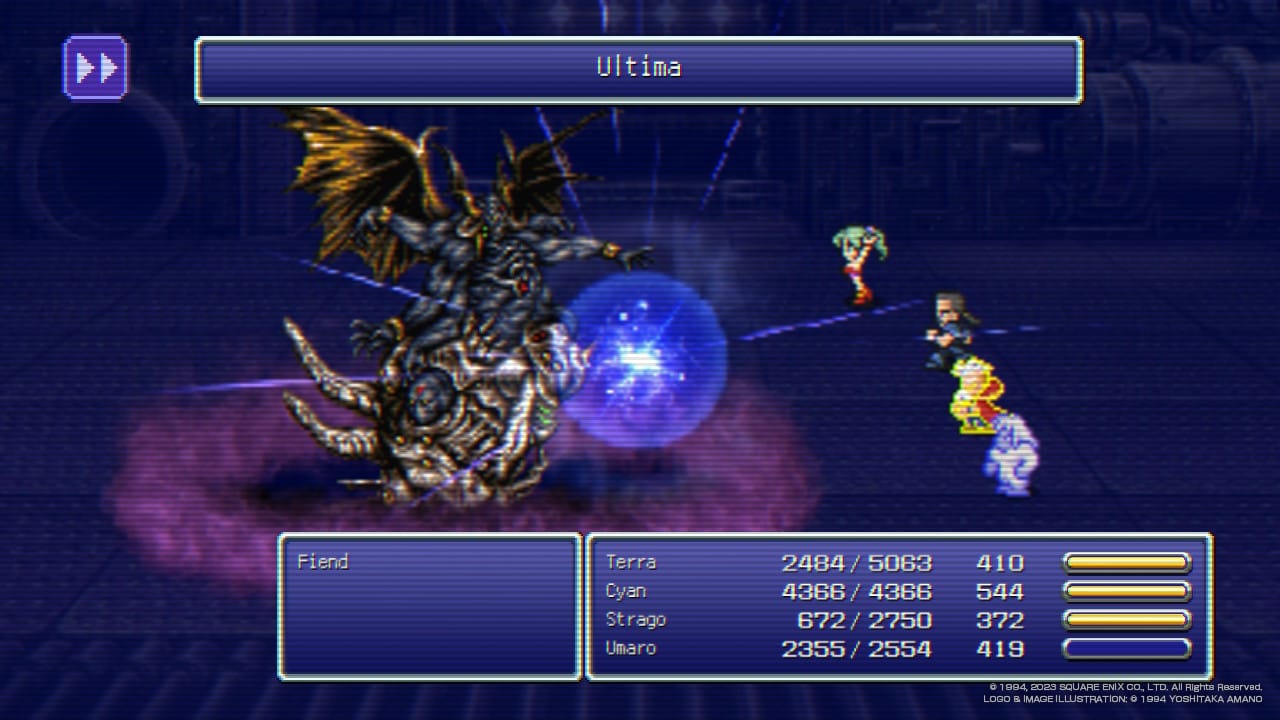
Instead, you fail. Your party gets thrown to the corners of the world. They are broken and lost. The game segments itself into radically different pieces, forcing the player to realize that things can become worse, and we may wax nostalgic for old and familiar pains to stave off the horrors of the present.
During the World of Ruin, as you gather your party and unite in strength for the real final battle, you must contend with more than just leveling up and collecting powerful items. Your party is broken; those powerful, haughty warriors of the resistance forces have been whittled down to nothing, each one of them certain that their failures were the cause of the world falling apart. Some party members, like Terra, find strength and meaning in this new world by taking care of others. Some, like Locke, are determined to use the magick remaining in the world to bring their loved ones back to life. Cyan becomes a pretender; Edgar fights for his old city; Celes, who starts in the World of Ruin, tries to take her own life if Cid dies on the island.
Memorable scenes and backdrops fill Final Fantasy VI. The opera is repeatedly showcased in Final Fantasy canon for its arresting beauty. It is a calming moment of humor and levity squeezed between scenes while we deviate from our all-important world-saving mission. But it pales against the humanistic depth of Celes’s suicide attempt, Cyan’s haunting reconnection with his family, or the many small tragedies that create the foundation of this misbegotten world. Perhaps, like an operatic play, we are meant to take a step back and admire the fringes of it all, the way the curtains frame these pivotal moments that remind us that despite all this loss and pain, there are things that make life worth living.
These poignant portrayals of life and death become the backbone of the future. Each character brought to the lowest point, must remind themselves and one another of what they can salvage in the aftermath of so much pain and destruction. Death is inevitable—you must make an effort to go on.
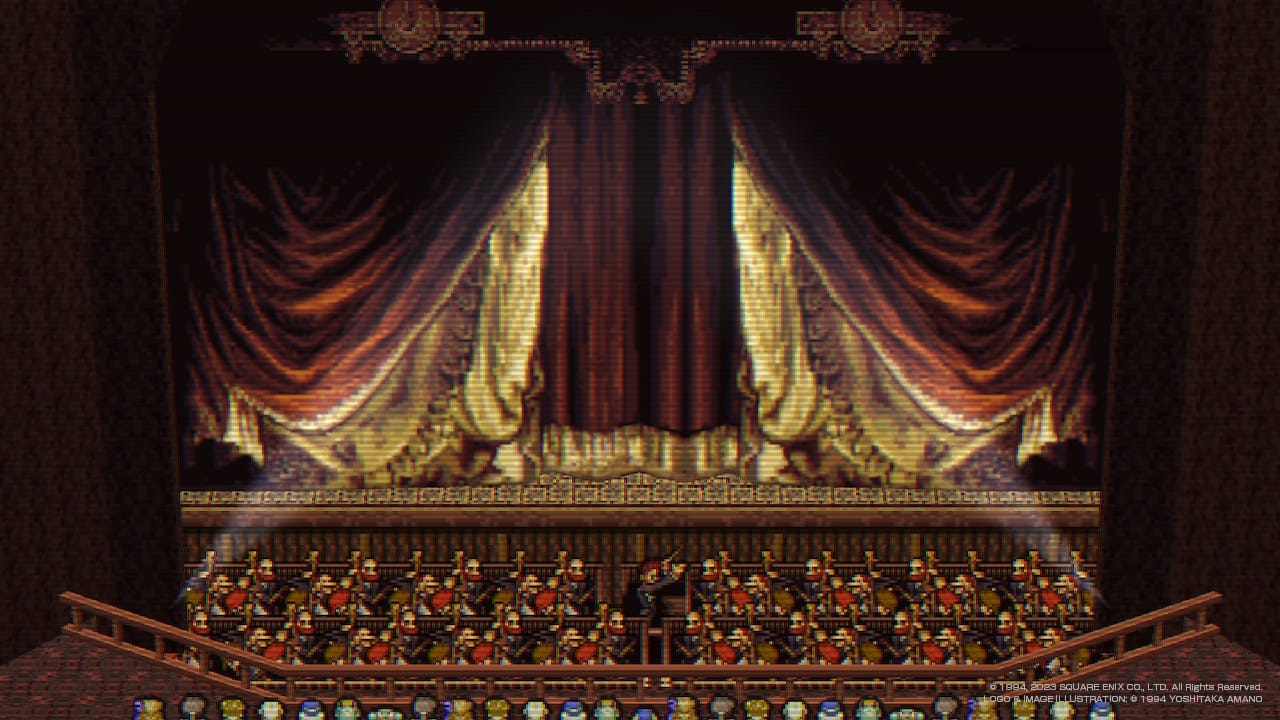
Instead, you fail. Your party gets thrown to the corners of the world. They are broken and lost.
One by one, you collect the party, finding them in various states of depression, anger, loss, and disbelief. In this most powerful series of events in all of Final Fantasy VI, the player is given the choice to rejoin the party. Nearly every single party member can be forgotten or left behind, but this would make the final ascension toward Kefka impossible. Unity, bonds, and comradeship are the things that truly bind a resistance together in strength — more so even than magick spells or weapons.
You must ask yourself: What is the point?
Final Fantasy VI presents us with this unique imagery of a world that has already fallen apart, where the deep questions must be asked: Is there any point in going on? What meaning is there in saving a world where there is hardly anything left to save?
Sadly, unity and salvation must come from the most vulnerable. Somehow, the greatest efforts fall upon the shoulders of those with the least strength to bear them. It is in their collective goodness and aspirations for their friends and loved ones that they continue, and the party one by one concludes that there is something left in the world worth saving.
It is difficult enough to combat governments and villains when you are falling apart inside. No one is ever truly alone, and there is such great strength in the bonds created in one another that the seemingly impossible can be overcome just by having friends and comrades who share vision and life. Final Fantasy VI presents these concepts not as radical but as inevitable; the unity the party shows in the World of Ruin is the result of terrifying personal motivation and the brittle willpower of the vulnerable who are still willing to fight.
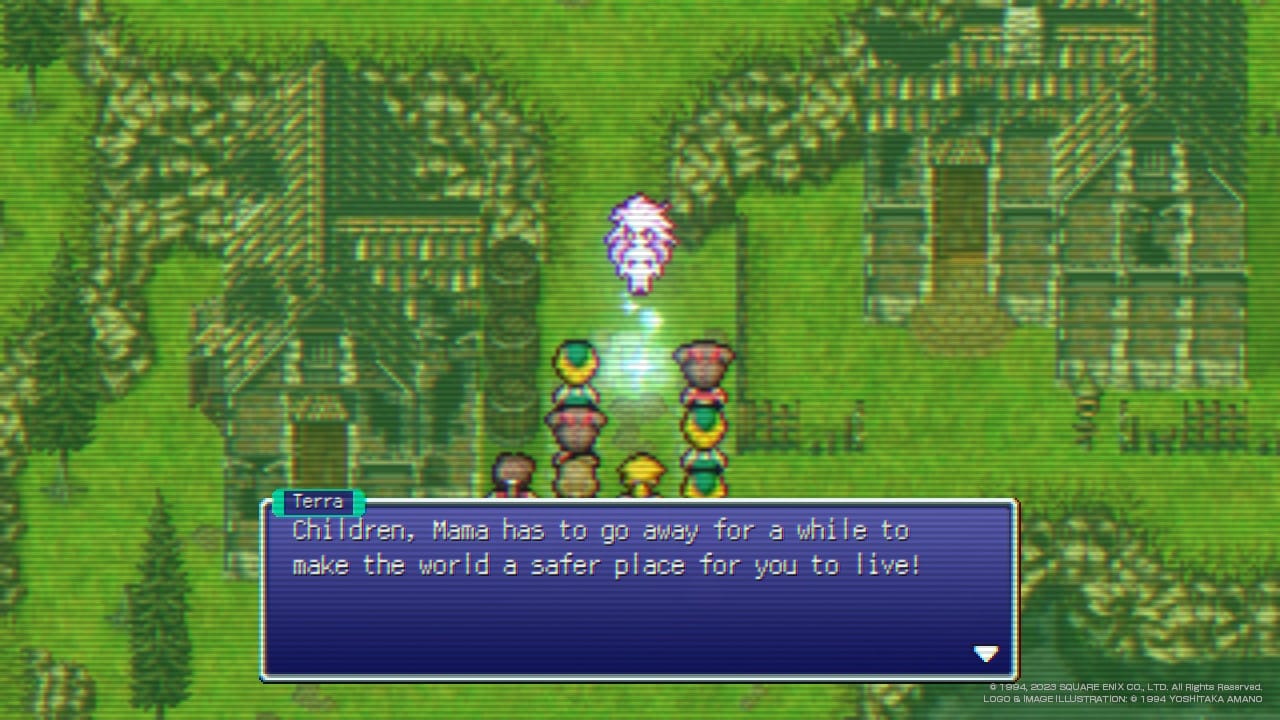
Although defeat is often presented as an inevitable gameplay mechanic in Final Fantasy, the stories rarely allow keen moments of failure. The World of Ruin is a rumination on loss, and what it means to go on at great personal risk and effort. The erudite philosophy of resistance presented by the party — grown stronger each time a familiar face rejoins your airship — is a testament to the strength of the human will. Slowly, steadily, your reformation is a noticeable thing, not only because of your once-empty airship filling with brightly animated sprites but because of the steady realization that maybe a new future is possible.
Sometimes it's good, sometimes it's bad
It’s been thirty years and Final Fantasy VI’s profound statements on corruption, failure, and perseverance are as important now as then. The concept of a small group fighting collectively against a corrupt government is not unique to Final Fantasy. It reflects our very society. For every party member who combats their struggles as they bear the sword and spell against monsters, we have friends in our own lives who do the same.
The World of Ruin is a metaphor, a state of will where we must decide what things are worth fighting for, and how much resolve it will take to fix a world that feels ruined beyond repair.
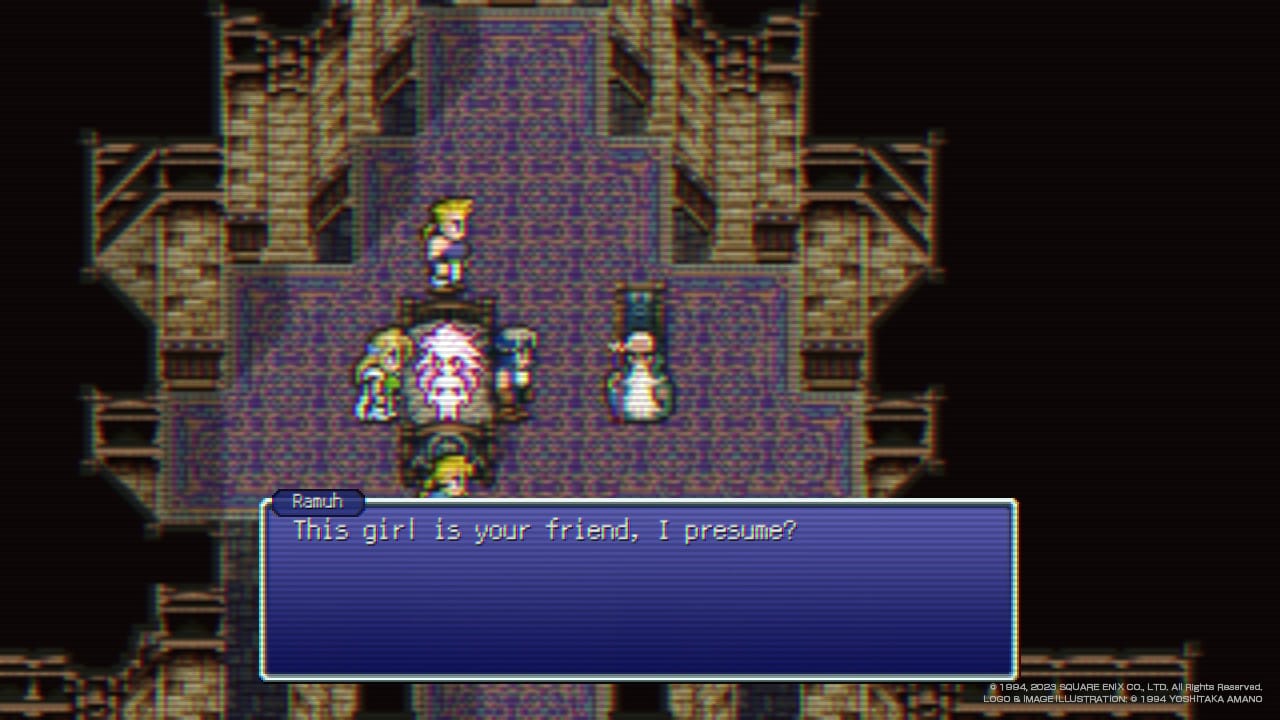
It’s not the final moments of Final Fantasy VI that answer these questions for me, but the journey the characters go on that brings them to the end. It is the small moments, the conquered struggles that showcase why it is so important to fight with everything you have against imperial and social evils. Not only are you not alone, but there are those out there waiting to fight alongside you, to hear your pain, to weather the World of Ruin.
Sometimes, continuing is the bravest thing you can do.
Postscript: I originally wrote this essay in April 2020 as a personal response to the budding worldwide changes caused by the COVID-19 epidemic. Four years later, the world is an eerie place, completely changed but still wholly recognizable. Now, as I write this, I am thinking about things like the unbelievable price of groceries, families displaced by the war in Palestine, and a rocky future in which I will most likely work until death and never retire. Friendships — and entertaining escapes such as Final Fantasy — feel more important than ever, but their philosophical importance rests in the actions we take as human beings to make our immediate and abroad worlds into better places.
My partner and I recently finished watching The Sopranos for the first time. In the first season, on a car ride, Christopher Moltesanti, playing by the incredible Michael Imperioli, says, “It’s like the fuckin’ regularness of everyday life is too hard for me.” Those of us, like myself, who find ourselves constantly struggling with depression and fighting invisible battles against the mundanity of the every day are given a balm when video games like Final Fantasy VI have the temerity to truly be about something real and resonant.
It might seem silly, but sometimes writing about video games feels like an anchor in a tenebrous, uncertain, maddening world.
